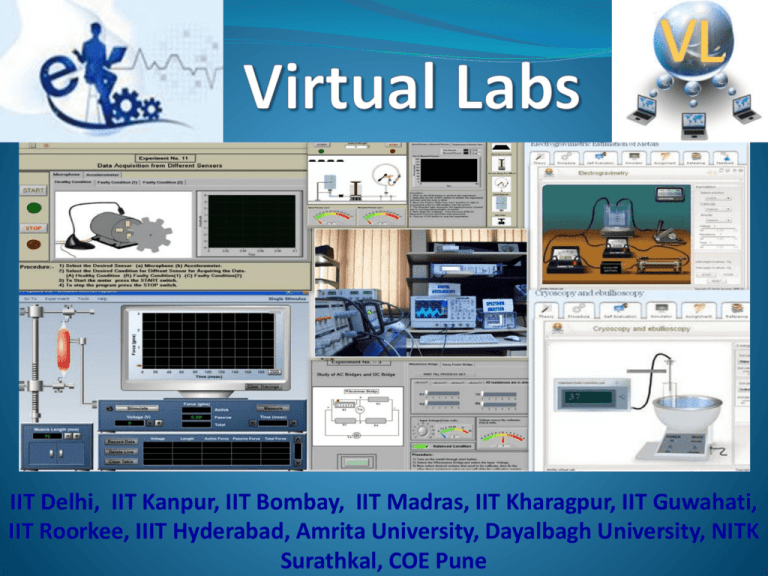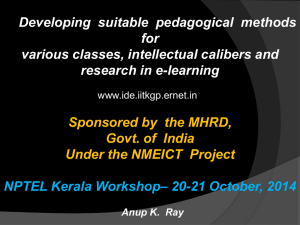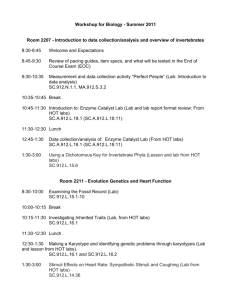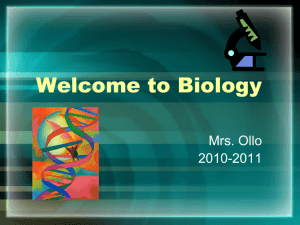Introduction to Wireless Communications
advertisement

IIT Delhi, IIT Kanpur, IIT Bombay, IIT Madras, IIT Kharagpur, IIT Guwahati, IIT Roorkee, IIIT Hyderabad, Amrita University, Dayalbagh University, NITK Surathkal, COE Pune Motivation Physical Distances Limit Doing Experiments Sharing of Costly Equipment Proliferation of Quality Labs The Basic Idea Remote User 1 Internet Physical Lab (located remotely) Remote User 2 Remote User n Objectives of the Virtual Lab Project To provide remote-access to labs in various disciplines of Science and Engineering. To cater to students at the UG level, PG level as well as to research scholars. To enable the students to learn at their own pace, and to arouse their curiosity. To provide a complete Learning Management System that includes web-resources, video-lectures, animated demonstrations and self evaluation. Types of Virtual Labs Remote Triggered Measurement Based Modeling / Simulation Based Intended Users College Students who do not have access to good lab-facilities. High-school students, whose inquisitiveness will be triggered, possibly motivating them to take up higher-studies. Researchers in different institutes who can collaborate / share equipment and resources. Different engineering colleges, who can benefit from the content and related teaching resources. Participating Institutes IIT Delhi IIT Guwahati IIT Bombay IIIT Hyderabad IIT Kanpur Amrita University IIT Kharagpur Dayalbagh University IIT Madras NITK Surthkal IIT Roorkee COE Pune Broad Areas for Virtual Labs Electronics and Communication Engineering Computer Science and Engineering Electrical Engineering Mechanical Engineering Civil Engineering Chemical Engineering Biomedical and Biotechnology Engineering Chemical Sciences Physical Sciences All areas of Science and Engineering are covered Website: www.vlab.co.in One common website to access all Virtual Labs Value Add in a Nutshell On-demand Labs [learn at own pace] Self - Evaluation [pre /post lab quiz] Integrated Learning [contents at one place] Animation/Video Tut [better insight] Freedom to make mistakes [can experiment with experiments] Virtual Labs - A Complete Learning Management System S. No. DISCIPLINE No. of Labs 1 Electronics & Communication Engineering 17 2 Civil Engineering 09 3 Electrical Engineering 12 4 Biotech & Biomedical Engineering 23 5 Physical Sciences 09 6 Chemical Engineering 04 7 Chemical Sciences 11 8 Computer Science & Engineering 23 9 Mechanical Engineering 08 Total 116 Virtual Labs ‘Launch’ Virtual Labs have been dedicated to the nation on 23rd Feb, 2012. Impact of the Project NATIONAL IMPACT Field Trials conducted in over 125 Colleges More than 1500 Faculty Trained Participating Institutes 150 Workshops Conducted More than 200000 Students Trained WORKSHOPS Training /Field Trials are Underway Website Hits (Google Analytics) Success Indicators Success Indicator Number of Virtual Labs developed Number of Students using Virtual Labs Number of Teachers trained on Virtual Labs Number of Engineering labs Typical daily usage of Labs Before 0 0 0 0 0 After Over 110 Over 2,00,000 Over 1500 Over 100 Over 800 Usages Number of Sessions and Users in Month of Sept, 2014 No. of Sessions / Users >> 1400 1200 1000 800 Sessions 600 Users 400 200 Sept, 2014 0 1 2 3 4 5 6 7 8 9 10 11 12 13 14 15 16 17 18 19 20 21 22 23 24 25 26 27 28 29 30 Days of Month ( Sept ) >> Objectives of Phase-II o To maintain/upkeep the existing operational virtual labs. o To port Virtual Labs to a common platform and host it on a national server. o To create a ‘single package’ of simulation-based Virtual Labs to be distributed to users. Objectives of Phase-II o To identify the gap areas between the typical syllabi of technical universities and the existing labs. o To convert labs not based on free and open source technologies to open source. o To port the existing labs to Mobile platform Tablets. For Effectiveness Flipping a book will not make you learn reading it will ! Just clicking through Virtual lab experiments will not make you learn … Doing it will ! Nodal Centers in Kerala C.M.S College, Kottayam D.B Pamba College, Parumala Marthoma College ,Thiruvalla S.B. College, Changanacherry S.D. College,Alappuzha St. Stephen's College,Pathanapuram Farook college , Kozhikode Govt.Victoria College,Palakkad Assumption college,Changanassery St. Joseph's College for Woman, Alappuzha NSS College, Manjeri Sree Narayana College,Kannur Nirmala College, Muvattupuzha BJM Govt. College, Chavara Sree Sankara College,Kalady Mohandas college of Engg. Tech.,TVM Sacred Heart College, Thevara,Kochi St.Joseph's College, Moolamatam Devamatha College,Kuravilangad,Kottayam Mar Athansius college for advanced studies ,Tiruvalla St. Xavier's college for Women,Aluva S.N. College, Cherthala Related to Google Analytics Session: Total number of Sessions within the date range. A session is the period time a user is actively engaged with your website, app, etc. All usage data (Screen Views, Events, Ecommerce, etc.) is associated with a session. Users: Users that have had at least one session within the selected date range. Includes both new and returning users. Page Views: Page views is the total number of pages viewed. Repeated views of a single page are counted. Cont…. ….. Pages / Session: Pages/Session (Average Page Depth) is the average number of pages viewed during a session. Repeated views of a single page are counted. Average Session Duration: The average length of a Session. Bounce Rate: Bounce Rate is the percentage of single-page visits (i.e. visits in which the person left your site from the entrance page without interacting with the page). % New Sessions: An estimate of the percentage of first time visits.





